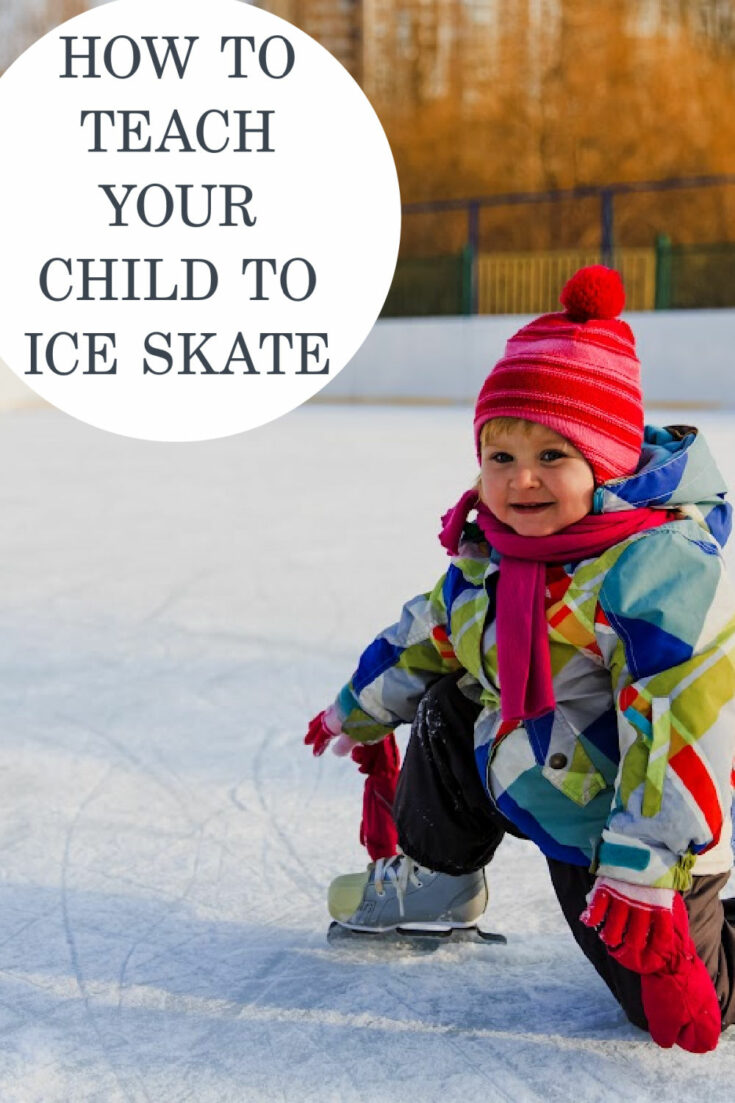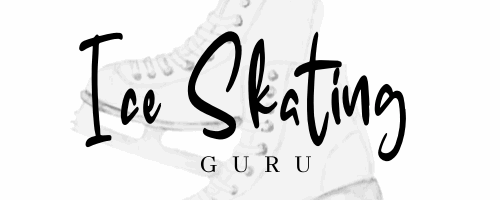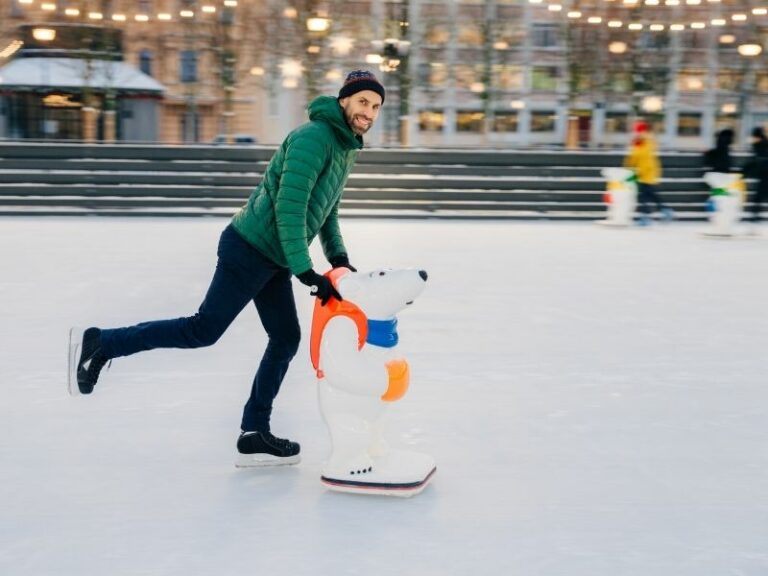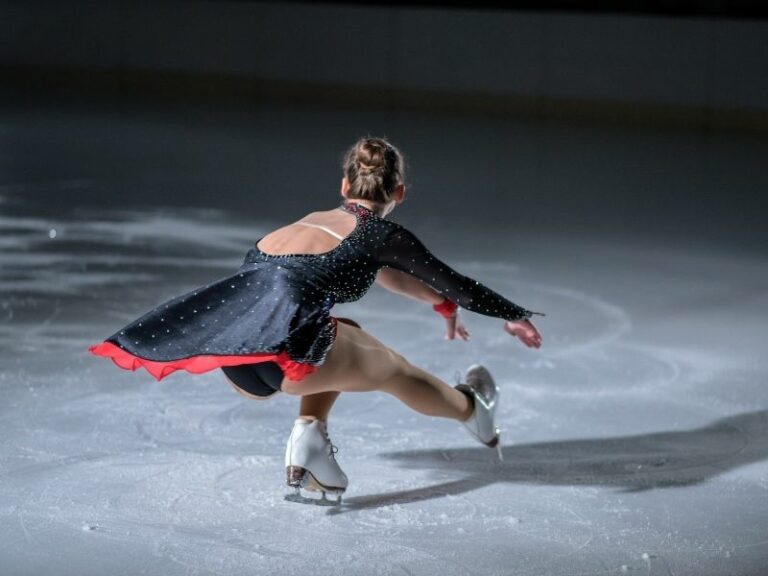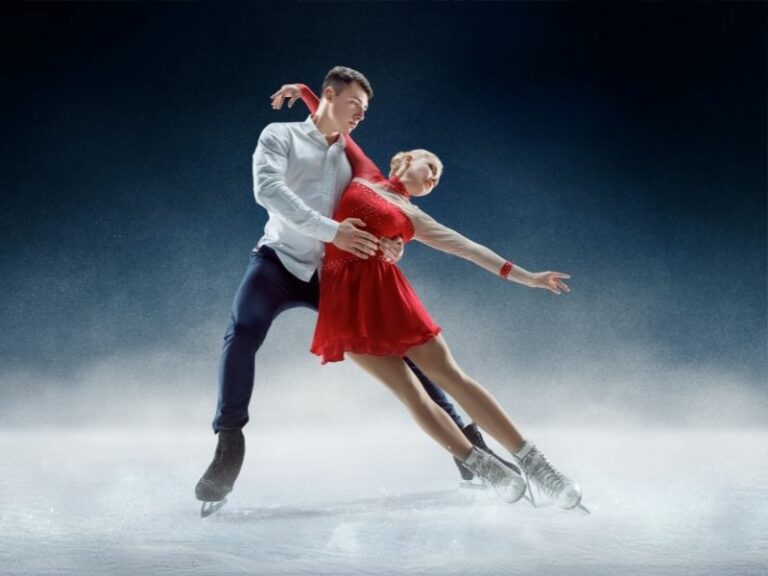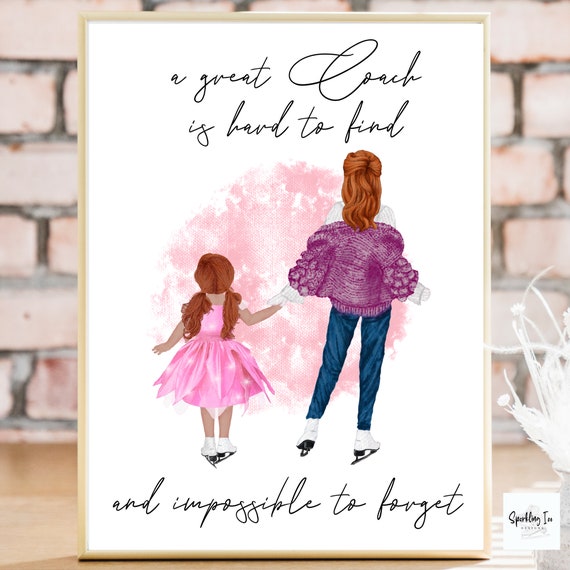How to Teach a Child to Ice Skate: A Step-by-Step Guide
While the fitness benefits of ice skating can not be overstated, the social benefits make learning to skate a life skill that every child should have. While it may seem daunting to teach a child how to ice skate, it can be a fun and rewarding experience for both of you once you know how to get started.
In this article, we will give you tips on how to take your child with no prior skating experience to the next level of skating.
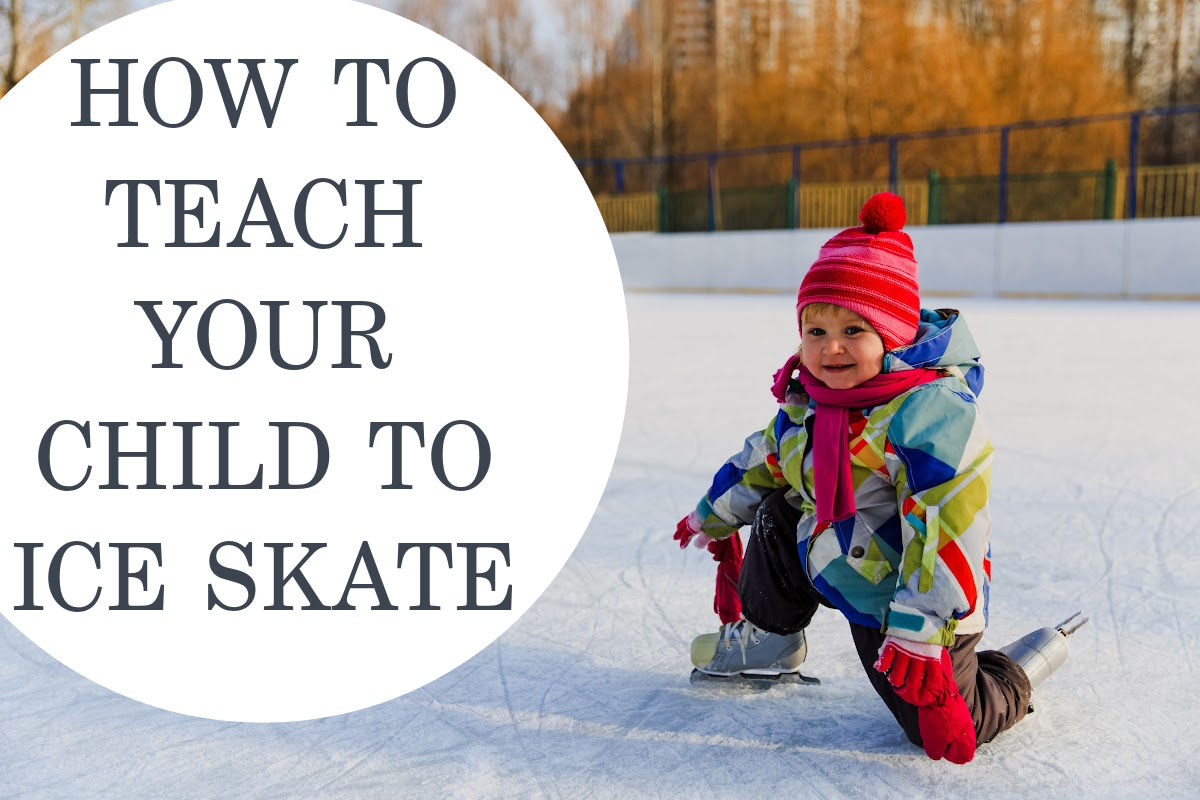
This post may contain affiliate links. Please read my Affiliate Disclosure for more information
MORE LEARN TO SKATE TIPS
10 Ice Skating Tips For Beginners
What To Wear For Ice Skating Lessons
At what age can you teach a child to ice skate?
While I’ve seen children as young as 18 months on the ice, an ice skating 3 year old is probably the norm if you want them to really take-off on their own. Both my children started on the ice at age 2.5 years and by the time they were 4 year old skaters, they had the fundamentals of ice skating down pat.
Before starting lessons, be sure that your child can stand and walk confidently on their own. Lessons should begin with basic exercises on dry land, such as marching in place and walking forward and backward. Once your child has mastered these skills, they can start practicing on the ice.
Be patient and take things slow; remember, learning to ice skate can be tricky for some kids. As your child progresses, you can gradually increase the difficulty of the exercises.
Do you need ice skating lessons for toddlers?
Most countries have a learn to skate program that is especially for preschool-age skaters. These introductory classes such as Snowplow Sam by Skate USA or pre-canskate in Canada are great for learning basic skating skills.
Young skaters will move up progressive levels in small steps as they learn new techniques.
However, if skating lessons are not in the budget or you want to give your child a head start, you can teach your child basic skills on ice yourself.
Let’s look at how you can get your child comfortable with ice skating:
Step one: Get The Right Gear
Although you can use rental skates for the first few skates, the best option is to buy your own skates. Here are the things you will need:
Skates
You can use ice hockey skates or figure skates although most toddlers start off with beginner skates. Here are some options:
- Lake Placid Adjustable Skates
- Bauer lil Angels
- Bauer Lil Champs
These have molded plastic skate boots and blades that do not have a toe pick. They are perfect for beginners and come in even the smallest toddler shoe size.
A lot of people wonder whether they should use double runners or Bob Skates that have two blades for their child. Most ice skating coaches advice against using these skates as they don’t allow your child to learn basic balance on one blade.
You can buy a pair of skates online at Amazon or at your local sporting goods store. Don’t forget to get them sharpened before you hit the ice!

Helmet
A helmet is a must for teaching a child to ice skate. You should buy a toddler sized hockey helmet with a face cage that will protect their face and teeth for any falls.
Snow pants
Thick snow pants are a good idea when you are teaching your child to skate. They will protect their bottom during the inevitable falls and keep them warm.
Other Gear You Need
- Comfortable clothes
- Gloves – Mittens are best for young children. Make sure they are waterproof.
- Elbow and knee pads – these are not essential but some people like to use them for the first few lessons.
Step Two: Get Your Child Used To Ice Skates
Small children typically have a much easier time switching from street shoes to ice skates but it can still take a while to feel comfortable. One way to get them use to the feel of skates is to have them wear them off the ice on a rubber surface or carpeted basement.
This can help them get the feel of the ice skate and for placing their body weight over the blades.

Step Three: Head to the rink.
Now it is time to hit the ice. I recommend starting at an indoor rink if possible as it will be warmer and the ice will likely be smoother than, say, a backyard rink.
Some rinks have special skating sessions for young kids which are perfect to make their first steps on the ice a positive experience. The last thing you want to do is teach your child how to ice skate in a crowded rink filled with loud music and crazy adult skaters.
At the rink, you may see that there are some skate aids you can use. While most learn to skate programs avoid the use of these devices, they can be a good way for building confidence in young children. They can also help to save your back!

Step 4: First Steps
The first thing a beginning skater needs to learn is how to fall! It may seem silly but falling correctly can prevent injuries and also give your child confidence to try new moves.
Teaching kids to fall and get up of the ice is a great way to make them feel comfortable on the ice. You can practice sliding and falling on their knees then getting up.
To get up, they need to put on knee and the other foot on the ice then push up with their foot. I often use the “magic” skate trick where I let them push off from my skate until they feel comfortable. This is another skating move that can be practiced off ice before you head to the rink.
One they can fall and get up, you can start to teach them some basic moves. Practice marching around the rink and then progress to snowplow stops.

How To Teach A Child To Ice Skate: FAQS
How long will it take to teach my child to skate?
This will depend. Your child should be able to skate independently around the rink after about 10 lessons but it is important to let them learn at their own pace. The best way to teach your child skating is do spend a few minutes working on first skills and then have fun with some ice skating games.
A strong foundation is very important when it comes to the mastery of advanced skills so don’t rush through the basics.
What should I do if my child gets tired of skating?
If your child is getting bored or frustrated with ice skating, it’s important to reassure them that they can take a break anytime they need it. Learning to skate can be a lot for a small child. If you find they get tired easily, try to find public skates at different times such as after nap time or first thing in the morning.
Remember that the goal is to encourage a lifelong love for skating and not to push too hard and scare them off.
What are some tips for teaching a child to ice skate?
First, you need to make sure you have the right clothing and safety equipment. This includes a helmet, gloves, knee pads, and elbow pads. You will also need a pair of ice skates that fit properly.
Next, you need to gather the right steps for teaching a child to ice skate. The most important thing is to take it slow and use the walker. The walker will help your child balance and keep them from falling.
Once your child is comfortable with the walker, you can start teaching them how to fall and get up. This is important because they will inevitably fall when they are skating.
Finally, you can start teaching small techniques one at a time. This includes how to stop, turn, and go backwards. These are all important skills that your child will need to know how to do before they can skate on their own.
How do I help my child feel comfortable on the ice?
You can have your child practice walking around the house or backyard in their skates before heading to the rink. This will help them get used to the feel of the skates and build up their confidence.
You can try putting a pillow under your child’s bottom if they are having trouble balancing. This will help them feel more secure and stable on the ice.
Remember to go at your child’s pace and take breaks often. They may get tired or frustrated, so it’s important to keep things relaxed and fun.
Make sure to have fun!
What should I do if my child falls while skating?
If your child falls while skating, it is important to stay calm and help them back up as long as they are not injured. It’s best if you stay on the ice and keep skating to make sure they don’t lose confidence. “Getting back on the horse” is a saying for a reason!
What are some safety tips for ice skating
Some safety tips for ice skating are to wear a helmet, make sure the snow is thick enough, check the lighting, and take your time.
Wearing a helmet will minimize the chances of head, arm, and leg injuries. Make sure the snow is at least six inches thick to avoid accidents. Checking the lighting before letting your child ice skate is important so they don’t trip and fall.
Take your time and practice often to help them learn the basics. Don’t try to rush them or force them to do something they’re not comfortable with.
What are some games or activities we can do while skating?
There are a few games or activities you can do while skating with your child to help them have fun and learn at the same time.
One game you can play is “Red Light, Green Light.” In this game, one person is “it” and stands at one end of the rink while the other skaters line up at the other end. The person who is “it” calls out “green light” and everyone starts skating towards them. Then, they call out “red light” and everyone has to stop skating. The last person to stop skating is the new person who is “it.”
Another fun game is to let your child make up an ice show and you have to try and copy it. I normally bring my phone with me so we can play their favorite songs.
Here are more ice skating games that you can play while ice skating with your child. Skating can be a lot of adventure when they get their feet gliding down the rink so make sure to encourage them and praise their efforts!
